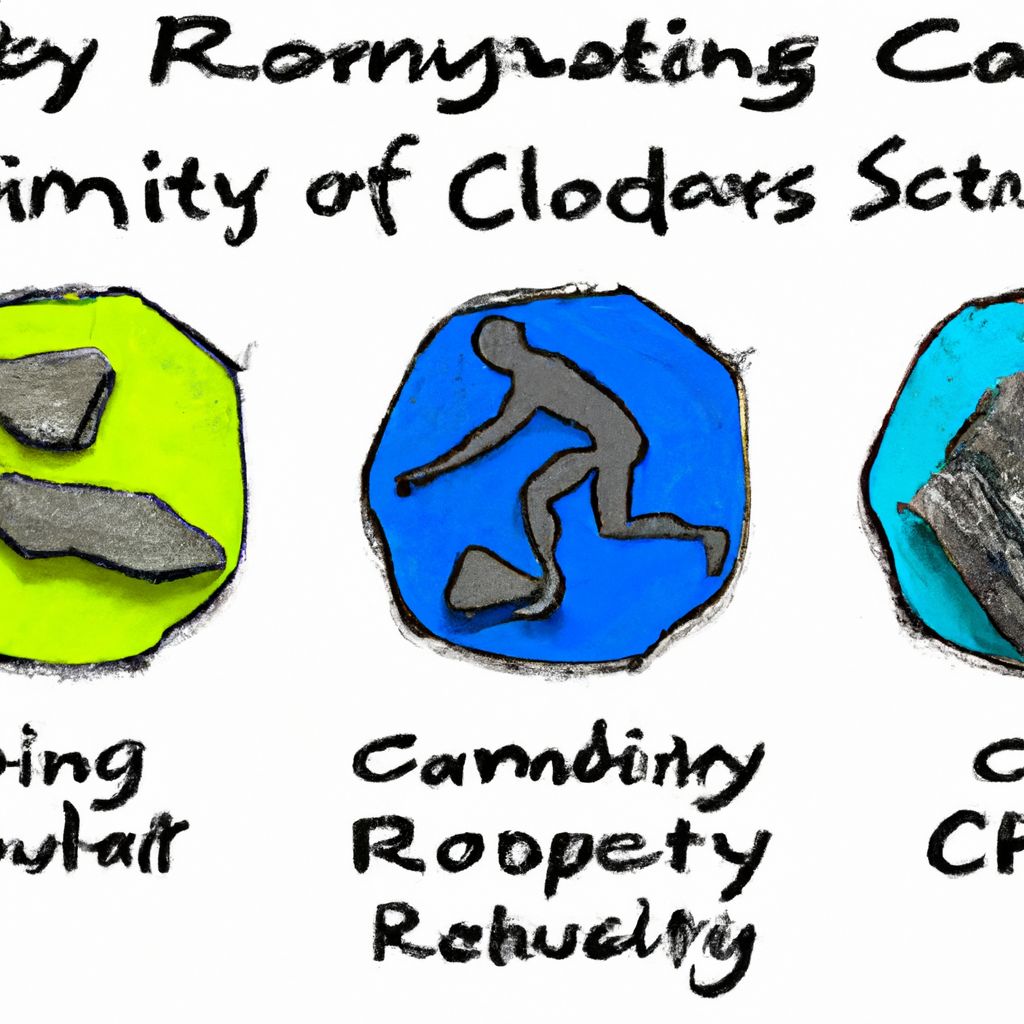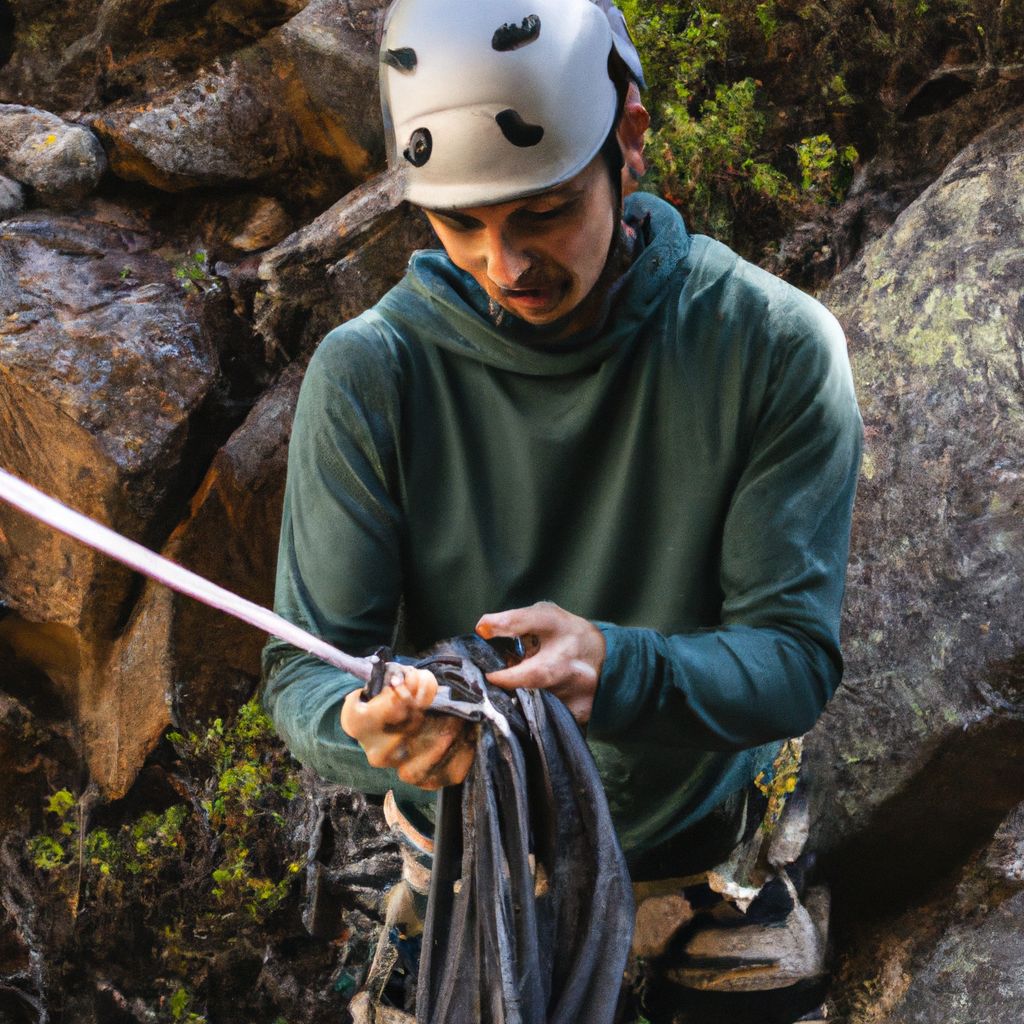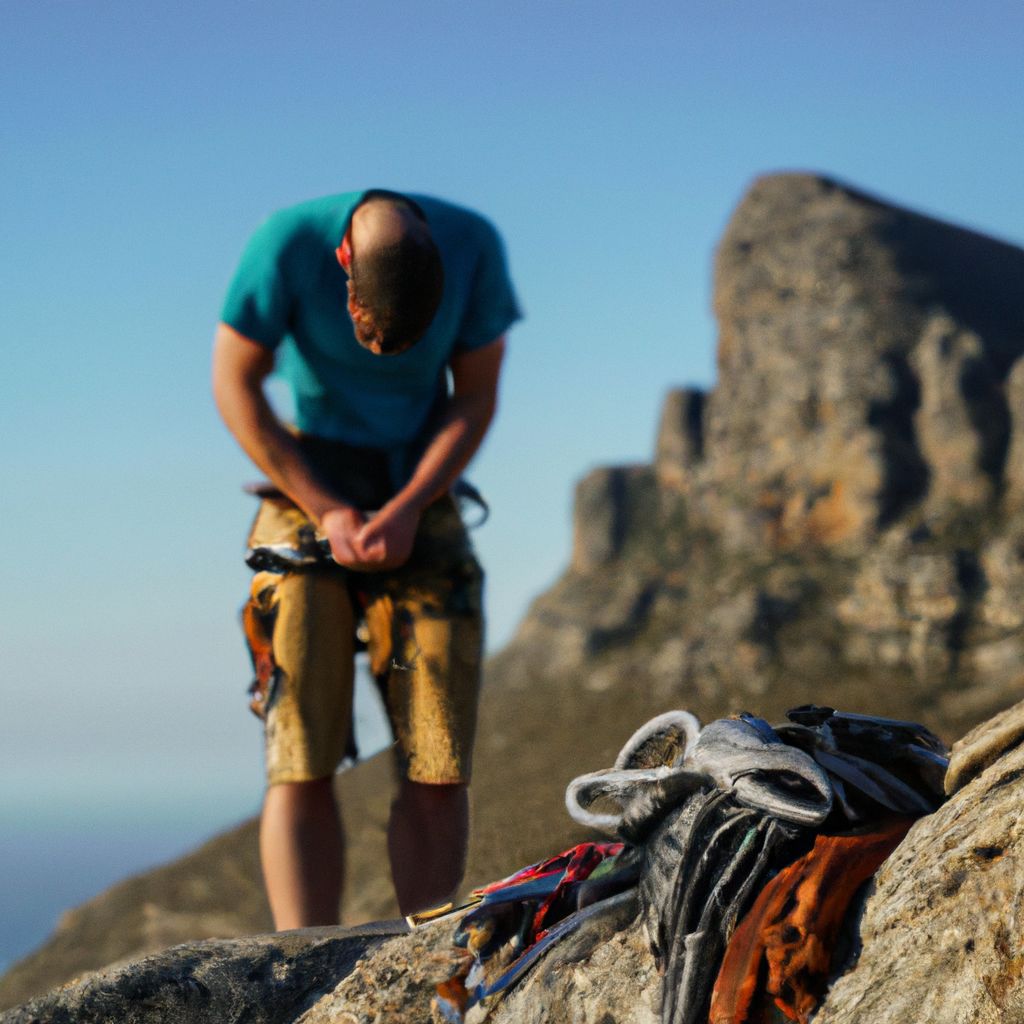- Understanding Rock Climbing
- History of Rock Climbing
- Types of Rock Climbing
- Basic Equipment
- Safety Precautions
- Rock Climbing Techniques
- Training and Physical Fitness
- Ethics of Rock Climbing
- Benefits of Rock Climbing
- Getting Started
Understanding Rock Climbing

Rock climbing, as the name suggests, involves climbing up, down, or across natural rock formations or artificial rock walls. It's an activity that requires strength, endurance, agility, balance, and mental control. Rock climbing is not just a sport or hobby but a way of life for many people across the world.
Rock climbing's relevance in today's world has been amplified by its addition to the 2020 Tokyo Olympics as a new discipline. This has pushed the sport into the global spotlight, creating a surge in interest and participation. With its roots in mountaineering, rock climbing has evolved tremendously and branched into several distinct styles, each offering unique challenges and rewards.
"Inclusion of climbing in Tokyo 2020 Olympics is a recognition of the growth, development and universal appeal of this vibrant sport," says International Federation of Sport Climbing (IFSC).
Moreover, studies show that rock climbing can offer numerous health benefits, both physical and mental. A research conducted by the British Journal of Sports Medicine concluded that rock climbing can improve cardiovascular health, strength, flexibility, and also has potential mental health benefits.
History of Rock Climbing

The history of rock climbing dates back to the late 19th century, when it was developed out of necessity. The earliest climbers were mountaineers seeking routes to ascend challenging peaks. Over time, this necessity evolved into a pursuit of climbing for its own sake, and thus rock climbing was born.
"Rock climbing as a sport emerged at the end of the 19th century in various parts of Europe, where climbers had developed skills and techniques for scaling rock faces and pinnacles." - Encyclopedia Britannica
The mid-20th century saw the rise of rock climbing as a recognized sport, with the first dedicated climbing gyms appearing in the 1980s. The past few decades have seen a significant evolution in climbing gear and techniques, making the sport more accessible and safer.
Another significant milestone in the history of rock climbing was the establishment of sport climbing routes. These are climbing routes where protection against falls is already provided, usually with pre-placed bolts. This development allowed climbers to focus more on the physical and athletic aspects of the sport.
- 1897
- First recorded rock climbing competition on the cliffs of Pen-y-Gwryd, Wales.
- 1930s
- Traditional climbing (or 'trad climbing') emerged in the UK and USA.
- 1980s
- First indoor climbing gyms opened, making the sport more accessible.
- 2020
- Rock climbing included in the Tokyo Olympics.
Types of Rock Climbing

Rock climbing can be divided into several distinct styles or types, each offering a unique set of challenges and requiring different skill sets and equipment. Here are some of the most popular types:
- Bouldering
- This type of climbing involves short, challenging routes on boulders or small rock formations. Bouldering doesn't require ropes or harnesses, but climbers often use crash pads for safety.
- Trad Climbing
- Short for traditional climbing, this style involves climbing long routes on big walls or cliffs. Climbers use gear to protect against falls, but the gear is removed after completion, leaving no trace of the climb.
- Sport Climbing
- Sport climbing routes have pre-placed bolts for protection. This allows climbers to focus on the physical aspects of climbing, like strength and technique, rather than gear placement.
- Top-Rope Climbing
- In this type, the climbing rope is anchored to the top of the route before the climber starts. It's a popular style for beginners, as it requires less technical knowledge and offers a high level of safety.
- Lead Climbing
- Lead climbing involves a climber ascending a route while periodically attaching their rope to fixed protection points. In case of a fall, the climber will only drop the distance to the last point of protection, plus the same distance again.
Each of these types has its unique appeal and challenges, and many climbers enjoy multiple styles. The choice often depends on the climber's experience, goals, and the available climbing locations.
Basic Equipment

Having the right equipment is vital for safety and success in rock climbing. Although the specific gear can vary depending on the type of climbing, some basic items are common to all forms of the sport. Here's a rundown of the essential climbing gear:
- Climbing Shoes: These specialized shoes have a sticky rubber sole that helps climbers grip the rock. The fit should be snug but not painfully tight.
- Climbing Harness: This is worn around the waist and thighs, allowing climbers to attach themselves to the climbing rope. A good harness should be comfortable and fit well.
- Climbing Rope: Climbing ropes are designed to absorb the energy of a fall, reducing the impact on the climber. The type and length of rope needed can vary depending on the climbing style.
- Belay Device: This mechanical piece of climbing equipment controls a rope during belaying. It creates friction to slow down or stop the rope in case of a fall.
- Carabiners: These are metal loops with spring-loaded gates, used to connect components, especially in safety-critical systems. They come in different shapes and sizes for different purposes.
- Helmet: A helmet is crucial for protecting the climber's head from falling debris and impact during a fall.
For types of climbing like trad climbing or ice climbing, additional gear like cams, nuts, ice axes, and crampons may be necessary. Always remember, safety should be the top priority when engaging in any form of rock climbing.
Safety Precautions

Rock climbing is inherently risky, but with the right safety measures, the risks can be significantly reduced. Safety should always be the top priority in any climbing activity. Here are some crucial safety precautions that every climber should take:
- Proper Training: Understanding climbing techniques, rope management, and safety protocols is crucial. Beginners should always start with a professional trainer or experienced climbers.
- Check Your Gear: Regularly inspect your climbing gear for any signs of wear and tear. Damaged equipment can fail when you need it the most.
- Always Wear a Helmet: A helmet can protect your head from falling rocks and the impact of a fall. Never climb without one.
- Use a Belay Device: A belay device lets you control the rope when your climbing partner is climbing or in case of a fall. Always use a belay device and know how to use it correctly.
- Know Your Limits: It’s important to know your physical limits and not push yourself too hard. Fatigue can lead to mistakes.
- Climb with a Partner: Climbing alone is extremely risky. Always climb with a partner who can provide assistance if necessary.
The best way to stay safe while climbing is to be proactive. Always prepare for the unexpected and ensure you have the necessary skills and gear to handle potential challenges.
"Climbing can be a safe and enjoyable activity if you take the right precautions. Always remember that your safety is in your hands." - The Climbing Guy
Rock Climbing Techniques

Mastering various climbing techniques can make your climbing experience more efficient and enjoyable. Here are some common techniques and their advantages:
- Edging:
- Edging involves using the edge of your climbing shoes to stand on small footholds. This technique is useful on vertical or slab routes with small foot placements.
- Smearing:
- When there are no footholds, smearing can be used. It involves pressing the rubber sole of your shoe against the rock to create friction and hold your weight.
- Flagging:
- Flagging helps maintain balance. This technique involves dangling one leg to counterbalance the weight while reaching for a hold with the opposite hand.
- Manteling:
- A mantle is used to surmount a ledge or large hold. It involves using your hand like a foot and pushing down to bring your body up.
- Crack Climbing:
- Crack climbing techniques, like jamming, involve inserting a part of the body into a crack in the rock and then applying pressure to hold yourself in place.
Each of these techniques offers unique advantages and can be used in different situations. A good climber should be able to adapt their techniques to fit the route they are climbing. Remember, the key to mastering these techniques is practice and experience.
Training and Physical Fitness

Physical fitness plays a crucial role in rock climbing. It's a sport that demands strength, endurance, flexibility, and balance. A well-rounded training program can help climbers perform better and reduce the risk of injury.
Here are some key areas to focus on for rock climbing training:
- Strength Training: This includes exercises like pull-ups, push-ups, and lifting weights. Focusing on the major muscle groups used in climbing - the back, shoulders, arms, and core - can significantly improve climbing performance.
- Endurance Training: Climbing can be a long, grueling activity, especially on big walls. Cardio exercises like running, cycling, or swimming can improve your stamina.
- Flexibility: Being flexible allows you to reach for holds that might otherwise be out of reach. Regular stretching can improve your flexibility.
- Bouldering: Bouldering is a great way to practice climbing techniques and build strength. Plus, it's a fun and challenging workout in its own right.
- Balancing: Good balance can help you stand on tiny footholds and reach for distant holds. Balance exercises, like yoga or slacklining, can be beneficial.
Finally, rest and recovery are just as important as training. Make sure to take rest days in between intense training sessions to allow your body to recover.
"Training can make the difference between reaching the top of your climb or falling short. But remember, rest and recovery are just as important as the workout itself." - Climbing Magazine
Ethics of Rock Climbing

The rock climbing community is known for its strong sense of stewardship and respect for nature. There are several principles and ethics that climbers are encouraged to observe to maintain the integrity of the sport and the environment.
- Leave No Trace: This principle encourages climbers to minimize their impact on the environment. This includes packing out all trash, avoiding the use of chalk that doesn't match the rock color, and not disturbing local flora and fauna.
- Respect Rock Art and Cultural Resources: Many climbing areas have historical or cultural significance. It's important to respect these areas and not touch or damage any rock art or other cultural resources.
- Minimize Bolting: Bolts can damage the rock and alter the climbing experience for others. Climbers should use existing bolts when possible and consider the potential impact before placing new ones.
- Respect Other Climbers: This includes not hogging routes, being quiet and considerate, and not climbing on routes that are beyond your ability level, which can lead to unnecessary wear and damage.
- Be Safe: Safety should be a priority in all climbing activities. This includes using appropriate gear, knowing your limits, and being prepared for emergencies.
Following these principles not only helps preserve climbing areas for future generations but also maintains the spirit and integrity of the sport.
"As climbers, we are responsible for caring for the places we love and ensuring they remain preserved for future generations." - Access Fund
Benefits of Rock Climbing

Rock climbing offers a host of benefits, extending beyond the physical to mental and emotional well-being. Let's explore some of these advantages:
- Physical Fitness:
- Rock climbing is a total-body workout that challenges virtually every major muscle group. It improves strength, flexibility, balance, and cardiovascular fitness.
- Mental Health:
- Climbing requires concentration and problem-solving, which can help improve mental focus and reduce stress. It's often compared to a moving meditation.
- Boosts Confidence:
- Reaching the top of a climb can be a significant confidence booster. It shows what you can achieve with determination and hard work.
- Builds Resilience:
- Rock climbing is filled with challenges and setbacks. Overcoming these obstacles can build resilience and teach valuable life lessons.
- Creates a Sense of Community:
- The climbing community is known for its camaraderie and mutual support. Climbing can be a great way to meet like-minded people and make new friends.
According to a study published in The Permanente Journal, rock climbing can also be an effective treatment for depression. The combination of intense physical exertion, concentration, and the rewarding nature of the sport can significantly improve mood and reduce depression symptoms.
Thus, rock climbing offers a unique blend of physical, mental, and emotional benefits, making it an excellent choice for people seeking a challenging and enriching activity.
Getting Started

If you're interested in starting rock climbing, here are some steps and tips to help you get started:
- Start at a Climbing Gym: Indoor climbing gyms are a great place for beginners to start. They offer a controlled environment to learn basic climbing techniques and build strength.
- Take a Class: Many climbing gyms offer beginner classes that cover basic climbing techniques, safety protocols, and how to use climbing gear.
- Invest in Basic Gear: Initially, you'll need a pair of climbing shoes and a harness. Many gyms offer rental equipment, but having your own gear can be more comfortable and hygienic.
- Find a Climbing Partner: Climbing with a partner is safer and more fun. They can offer support, share their experience, and help you improve your skills.
- Climb Regularly: Like any sport, the more you climb, the better you'll get. Try to climb regularly to build strength, improve techniques, and gain confidence.
Remember, everyone starts as a beginner, so don't be discouraged if you find it challenging at first. With time, patience, and practice, you'll see improvement. As the saying goes, "The best climber is the one having the most fun."
"Climbing is a journey of continuous learning. Every route or problem presents a new challenge and the chance to improve." - Climbing Magazine



